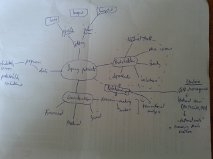Well, does it? Elliott’s work (2007) explores the possibilities within assessment practice given our access to Web 2.0 technologies. Elliott characterises traditional assessment (Assessment 1.0) as mostly paper-based, classroom-based, formalised, highly synchronised (in terms of time and place, and highly controlled (in terms of contents and marking). Furthermore, he argues that most attempts to introduce technology to enhance this has resulted changes in the following areas:
· Less synchronous – we can now sit at our desks and do e-assessments in our own time
· Electronic based – fairly obvious
· Greater range of content – particularly in terms of artefacts considered, such as digital artefacts like videos, photos and other content, often assembled in e-portfolios.
An example of this type of assessment I’m personally aware of is GCSE PE students submitting video evidence of their performance in certain sports which don’t lend themselves to most school settings (horseriding for example).
Elliott’s ideas are around the use of digital evidence produced in everyday, real-life situations, with tools we are familiar using. Web 2.0 technologies make this possible – possible to escape highly prescriptive and ‘unrealistic’ assessment tasks that largely test our ability to do tests, as opposed to our ability to operate in the everyday world. All this is particularly suited to the digital native (Prensky, 2003), the stereotypical ultra-confident and competent users of the web. There is no doubt that the way we initiate a search for new information has changed with these technologies. People do use Wikipedia and search engines, they use their online social networks as they still make use of their offline networks. Poor old digital immigrants (Prensky, 2003), like myself, are acknowledged by Elliott as being somewhat disadvantaged in their potential to embrace Assessment 2.0 in terms of a lack of Web 2.0 skills and infrastructure.
Elliot offers the following characteristics to help us visualise how Assessment 2.0, taking advantage of Web 2.0 tech, might look:
Of these, I find ‘Tool Supported’ problematic. Firstly, Whitelock’s reproduction does not seem to accurately reflect the source material (Elliott, 2007), and it feels like an add-on to this list. Elliott appears to be focused on the use of digital evidence, such which are naturally occurring (already exist and not created solely for assessment purposes, and which could manifest themselves through different multimedia and are distributed across different sources (blogs, inbox, ipod etc).
While it is worth stressing these digital sources, the ‘use of ICT’ bit still jars, and sounds artificial. A case in point would be my experience on the NPQICL programme, a largely experiential course, which has attempted, by and large unsuccessfully, to move some of the teacher-student and student-student dialogue to online forums. Cohort after cohort of students failed to engage in these forums, and the overwhelming reason cited was that students could (and were) engaging with each other via email. Migrating their attention to a specific forum did not offer any appreciable increase in value to their learning, while at the same time meant they had to engage with a new and unfamiliar environment. By contrast, email was a tool they were all comfortable with, were ‘logged on’ to by default through work, and therefore felt natural.
Overall though, I like the idea of using more digital evidence in assessment.
Thinking back to the course I’m going to facilitate in the future, I’m already thinking about capturing audio or video evidence on the day of the conversational skills that we will be developing. These could easily be shared or stored for any of the group (or the wider organisation) to access and re-use.
References
Elliott, B. (2008) Assessment 2.0: Modernising Assessment in the Age of Web 2.0 [online], Scottish Qualifications Authority,http://www.scribd.com/ doc/ 461041/ Assessment-20 (accessed 2 December 2010).
Prensky, M. (2001) Digital Natives, Digital Immigrants. On the Horizon. NCB University Press Vol 9 No.5, October 2001
Whitelock, D. (2011) ‘Activating assessment for learning: are we on the way with Web 2.0?’ in Lee, M.J.W. and McLoughlin, C. (eds) Web 2.0-based eLearning: Applying Social Informatics for Tertiary Teaching, Hershey, PA, IGI Global, pp. 319–42.
